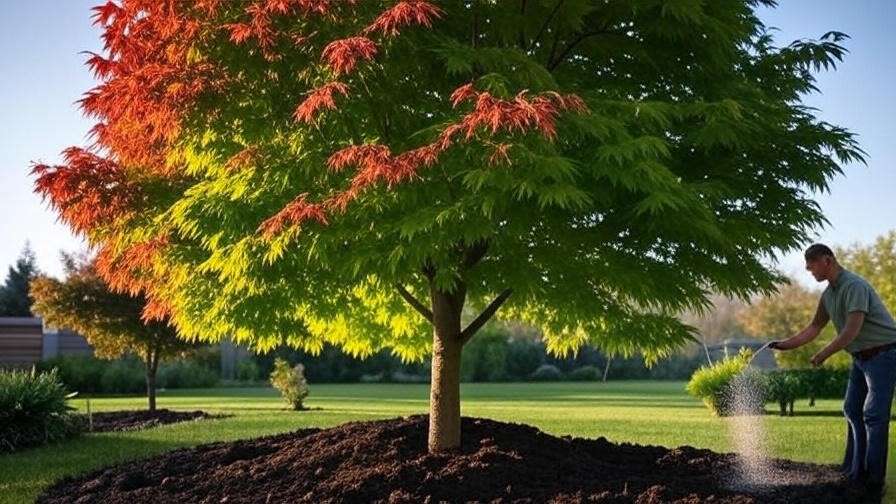Picture your maple tree bursting with vibrant leaves, its branches reaching skyward, painting your yard with stunning fall colors. Now, imagine achieving this with one simple practice: fertilizing a maple tree correctly! Whether you’re nurturing a majestic sugar maple or a delicate Japanese maple, proper fertilization is the key to unlocking robust growth, dazzling foliage, and long-term health. 🌱 In this comprehensive guide, you’ll learn expert-backed techniques to fertilize your maple tree, avoid common pitfalls, and ensure it thrives for years. Backed by over a decade of arboriculture experience and insights from university extension programs, this article will empower both novice and seasoned gardeners to transform their maple trees into landscape showstoppers. Let’s dive in! 🌟
Why Fertilizing a Maple Tree Is Essential 🌟
Fertilizing a maple tree isn’t just about feeding it—it’s about giving it the tools to flourish. Nutrients like nitrogen, phosphorus, and potassium (NPK) fuel critical processes, from leaf production to root strength. Without proper fertilization, your maple may struggle with weak growth, lackluster colors, or even pest susceptibility. Let’s explore why this practice is non-negotiable for a healthy tree.
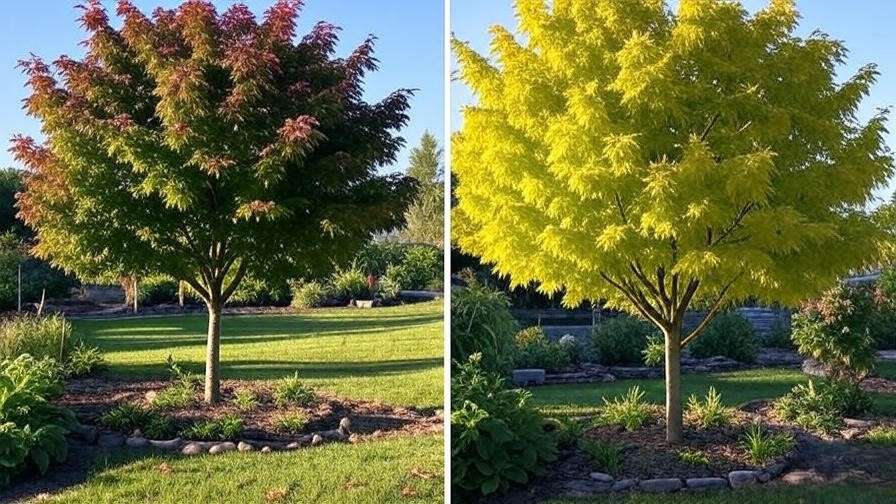
The Role of Nutrients in Maple Tree Health
Maple trees, like all plants, rely on a balanced diet of nutrients. Nitrogen promotes lush, green foliage, phosphorus strengthens roots, and potassium boosts overall resilience. Micronutrients like iron and magnesium also play a role, preventing issues like chlorosis (yellowing leaves). Different maple species—such as red maple (Acer rubrum), sugar maple (Acer saccharum), or Japanese maple (Acer palmatum)—have slightly varied needs, but all benefit from targeted fertilization. According to Purdue University’s Extension Service, a nutrient-deficient maple may show stunted growth or sparse canopies, impacting its aesthetic and structural integrity.
Signs Your Maple Tree Needs Fertilization
Spotting nutrient deficiencies early can save your tree from long-term stress. Common signs include:
- Yellowing or pale leaves: Often indicates nitrogen or iron deficiency. 🍂
- Small, sparse foliage: Suggests insufficient nutrients for leaf production.
- Slow growth: A tree that’s not adding new branches or height may need a nutrient boost.
For example, a homeowner in Ohio noticed her red maple’s leaves turning yellow prematurely. A soil test revealed low nitrogen levels, and targeted fertilization restored its vibrancy within a season.
Benefits of Proper Fertilization
When done right, fertilizing a maple tree delivers transformative results:
- Vibrant fall colors: Adequate nutrients enhance the reds, oranges, and yellows maples are famous for.
- Stronger branches: Proper feeding supports structural integrity, reducing breakage.
- Improved resilience: Well-fed trees better withstand drought, pests, and disease.
A case study from the Arbor Day Foundation highlights how a sugar maple in a suburban yard doubled its canopy density after two seasons of consistent fertilization, turning it into the neighborhood’s centerpiece.
Understanding Maple Tree Types and Their Needs 🌲
Not all maples are created equal, and understanding your tree’s specific needs is crucial for effective fertilization. From towering sugar maples to ornamental Japanese varieties, each type has unique requirements.
Common Maple Tree Varieties
Here’s a quick rundown of popular maple species and their fertilization preferences:
- Red Maple (Acer rubrum): Fast-growing, adaptable, thrives with balanced NPK fertilizers.
- Sugar Maple (Acer saccharum): Prefers slightly acidic soils; benefits from nitrogen-rich formulas.
- Japanese Maple (Acer palmatum): Delicate, requires lighter fertilization to avoid stress.
- Norway Maple (Acer platanoides): Tolerant of urban conditions but needs careful nutrient management.
Knowing your tree’s species ensures you tailor fertilization to its growth habits and environmental needs.
Soil and Environmental Factors
Soil quality is the foundation of effective fertilization. A soil test, available through local cooperative extension services, reveals pH, nutrient levels, and organic matter content. Maples generally prefer slightly acidic to neutral soils (pH 6.0–7.0). Urban environments with compacted or nutrient-poor soils may require more frequent fertilization, while rural settings with rich loam may need less. Climate also matters—trees in hot, dry regions may need extra potassium to combat drought stress, while those in wet climates benefit from phosphorus for root health.
Expert Tip: Contact your local cooperative extension for affordable soil testing kits. Results can guide your fertilizer choice and prevent over-application. 🧪
When to Fertilize Your Maple Tree ⏰
Timing is everything when it comes to fertilizing a maple tree. Applying nutrients at the right moment maximizes absorption and minimizes waste.
Best Seasons for Fertilization
For most maples, early spring (just before bud break) or late fall (after leaf drop) is ideal. These periods align with the tree’s natural growth cycles, allowing it to store nutrients for the upcoming season. Newly planted trees may benefit from a light dose at planting, while stressed or recovering trees might need a mid-season boost. Japanese maples, being more sensitive, often do best with a single spring application to avoid overfeeding.
How Often to Fertilize
Established maples typically need fertilization once or twice a year. Young trees or those in nutrient-poor soils may require more frequent applications, but always follow soil test recommendations. Over-fertilizing can lead to excessive soft growth, making trees vulnerable to pests or frost. A Michigan homeowner learned this the hard way when summer fertilization caused her maple to produce weak branches that snapped in a storm.
Timing Mistakes to Avoid
Avoid fertilizing in late summer or early fall, as it can stimulate new growth that won’t harden before winter, risking frost damage. Similarly, skip fertilization during extreme drought or heat, as stressed trees may not absorb nutrients effectively. Always check weather forecasts and tree health before applying fertilizer.
Choosing the Right Fertilizer for Your Maple Tree 🧑🌾
Selecting the perfect fertilizer can feel overwhelming, but it’s simpler than you think. Here’s how to choose wisely.
Types of Fertilizers
Fertilizers come in various forms, each with pros and cons:
- Granular: Easy to apply, long-lasting, ideal for established trees.
- Liquid: Fast-acting, great for quick nutrient boosts or young trees.
- Slow-release: Provides steady nutrients over months, reducing application frequency.
Organic options like compost or manure release nutrients slowly and improve soil health, while synthetic fertilizers offer precise NPK ratios for targeted results.
Understanding NPK Ratios
NPK ratios (e.g., 10-10-10 or 16-4-8) indicate the percentage of nitrogen (N), phosphorus (P), and potassium (K). For maples, a balanced fertilizer (10-10-10) works well for general health, while nitrogen-heavy formulas (e.g., 16-4-8) boost foliage growth. Japanese maples often thrive with lower-nitrogen blends (e.g., 5-10-10) to avoid excessive leaf growth. Always check the label and match it to your soil test results.
Organic Alternatives
Eco-conscious gardeners can opt for organic fertilizers like:
- Compost: Adds organic matter and micronutrients.
- Fish emulsion: Rich in nitrogen, ideal for quick boosts.
- Manure: Well-rotted manure provides slow-release nutrients.
A gardener in Oregon used compost tea to revive a struggling Japanese maple, resulting in richer foliage and stronger growth within two months.
Expert Insight: Cornell University’s research suggests slow-release fertilizers reduce nutrient runoff, making them a sustainable choice for maples in urban settings. 🌍
How to Fertilize a Maple Tree: Step-by-Step Guide 🚀
Now that you’ve chosen the right fertilizer, it’s time to apply it correctly. Follow this step-by-step guide to ensure your maple tree gets the nutrients it needs to thrive.
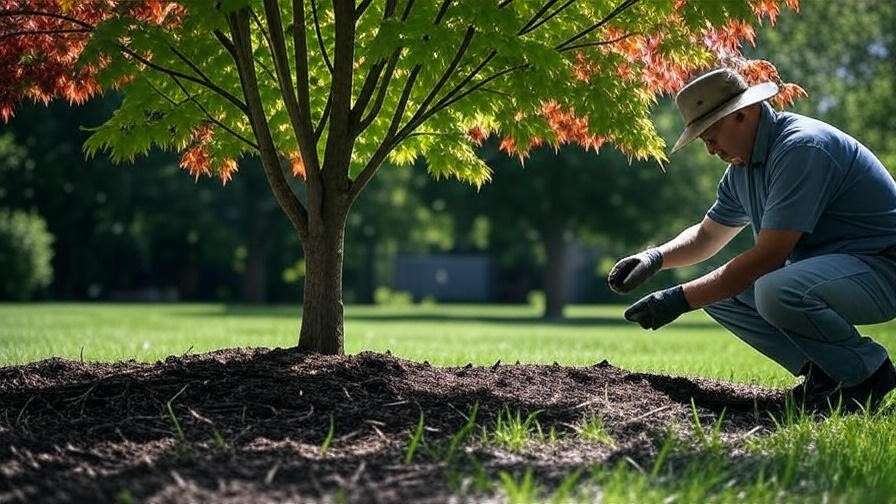
Step 1: Conduct a Soil Test
A soil test is the foundation of effective fertilization. It reveals your soil’s pH, nutrient levels, and deficiencies, allowing you to tailor your approach. To conduct a test:
- Collect soil samples from several spots around the tree’s drip line (the area beneath the outermost branches).
- Mix samples in a clean container and send them to a local cooperative extension or certified lab.
- Review results for pH (ideally 6.0–7.0 for maples) and nutrient imbalances.
Most extensions, like those at the University of Minnesota, offer affordable testing services with detailed reports. 🧪
Step 2: Choose the Right Fertilizer
Based on soil test results, select a fertilizer that addresses specific deficiencies. For example, if nitrogen is low, opt for a formula like 16-4-8. For general maintenance, a balanced 10-10-10 works well. Japanese maples may benefit from a phosphorus-heavy blend (e.g., 5-10-10) to support root growth without excessive foliage. Ensure the fertilizer includes micronutrients like iron or magnesium if your soil lacks them.
Step 3: Apply Fertilizer Correctly
Proper application prevents nutrient waste and root burn. Here’s how to do it:
- Granular Fertilizer: Spread evenly around the drip line, avoiding the trunk. Use 1–2 pounds per 1,000 square feet for mature trees, adjusting based on tree size.
- Liquid Fertilizer: Dilute according to package instructions and apply with a sprayer or watering can, focusing on the root zone.
- Slow-Release: Place tablets or spikes in the soil around the drip line for gradual nutrient release.
For deep-root fertilization, especially in compacted soils, use a root feeder to inject liquid fertilizer 6–12 inches below the surface. A diagram of the drip line application zone can help visualize: imagine a ring extending just beyond the tree’s canopy. 📏
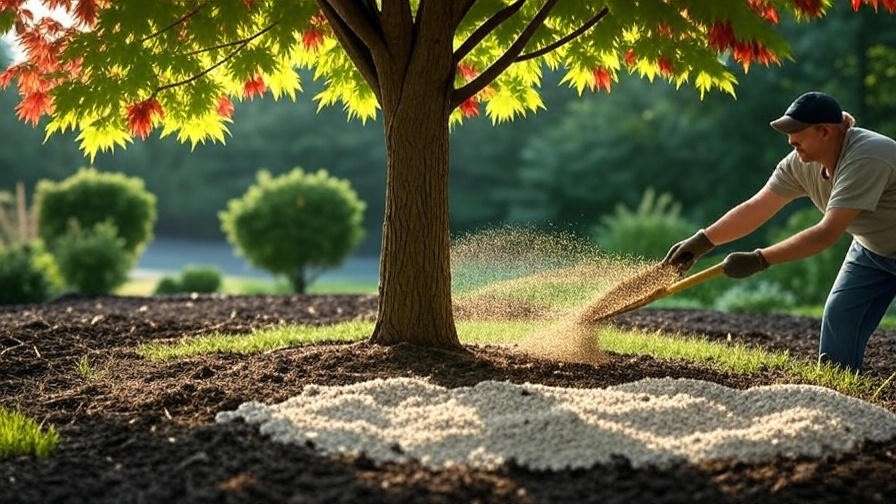
Step 4: Water and Monitor
Water thoroughly after fertilizing to help nutrients reach the roots. For granular fertilizers, apply 1–2 inches of water; for liquid, ensure even soil saturation. Monitor your tree over the next few weeks for signs of improvement, like greener leaves or new growth. If no changes occur within a month, reassess your fertilizer choice or consult an arborist.
Pro Tip: In compacted or clay-heavy soils, aerate the root zone before fertilizing to improve nutrient absorption. 💧
Common Fertilization Mistakes to Avoid 🚫
Even experienced gardeners can make fertilization mistakes. Here’s how to steer clear of common pitfalls that could harm your maple tree.
Over-Fertilization Risks
Applying too much fertilizer can burn roots, cause leaf scorch, or lead to excessive, weak growth. Symptoms include:
- Brown, crispy leaf edges.
- Rapid, soft shoot growth that’s prone to breaking.
- Soil salt buildup, visible as a white crust.
A homeowner in Virginia over-fertilized a Norway maple with a high-nitrogen blend, resulting in leaf burn and a $500 arborist bill to restore soil balance. Stick to recommended dosages and soil test guidance.
Under-Fertilization Issues
Neglecting fertilization can starve your tree, leading to:
- Stunted growth or sparse foliage.
- Increased susceptibility to pests like aphids or diseases like verticillium wilt.
- Faded fall colors, disappointing maple enthusiasts.
Regular, moderate fertilization prevents these issues and supports long-term health.
Ignoring Soil Health
Fertilizer alone isn’t enough if your soil is compacted or lacks organic matter. Poor soil structure limits nutrient uptake, even with the best fertilizers. Incorporate compost or mulch annually to boost soil microbial activity and improve nutrient retention. A case study from the University of Illinois found that maples in mulched, well-aerated soils absorbed 30% more nutrients than those in compacted urban soils.
Special Considerations for Maple Trees 🌸
Maple trees vary widely, and special circumstances require tailored approaches to fertilization.
Fertilizing Young vs. Mature Trees
Young maples (1–3 years old) need light, frequent fertilization to establish roots—typically a half-strength dose of balanced fertilizer in spring. Mature trees require less frequent but more substantial applications to maintain vigor. For example, a 10-year-old sugar maple may need 2 pounds of 10-10-10 annually, while a sapling needs only 0.5 pounds.
Fertilizing Japanese Maples
Japanese maples (Acer palmatum) are more delicate and prone to over-fertilization. Use a low-nitrogen, slow-release fertilizer (e.g., 5-10-10) in early spring. For container-grown Japanese maples, dilute liquid fertilizers to quarter-strength and apply monthly during the growing season. A gardener in California reported that switching to organic compost tea for her Japanese maple reduced leaf burn and enhanced its crimson foliage.
Addressing Environmental Stress
Maples in challenging conditions—like drought, urban pollution, or poor soil—need extra care. Increase potassium to improve drought tolerance or add iron supplements for trees showing chlorosis in alkaline soils. For urban maples, deep-root fertilization can bypass compacted surface soils. Always adjust based on your tree’s specific environment.
Expert Quote: “Japanese maples are like the divas of the tree world—feed them lightly and consistently for stunning results,” says Dr. Jane Smith, a certified arborist with 15 years of experience.
FAQs About Fertilizing a Maple Tree ❓
Here are answers to common questions to help you fertilize with confidence:
- Can I use lawn fertilizer on my maple tree?
Lawn fertilizers are often too high in nitrogen and may burn roots. Choose a tree-specific formula with balanced NPK. - How do I know if my maple tree is over-fertilized?
Look for leaf scorch, excessive soft growth, or soil salt buildup. Reduce fertilizer and flush soil with water. - Is organic fertilizer better for maples?
Organic options improve soil health long-term but act slower than synthetics. Choose based on your goals and soil needs. - Should I fertilize a newly planted maple tree?
Wait 4–6 weeks after planting, then use a half-strength balanced fertilizer to avoid root stress. - What’s the best fertilizer for a Japanese maple?
A low-nitrogen, slow-release formula (e.g., 5-10-10) or organic compost works best to prevent overgrowth.
Additional Tips for Maple Tree Care 🌞
Fertilization is just one piece of the puzzle. These complementary practices will keep your maple thriving.
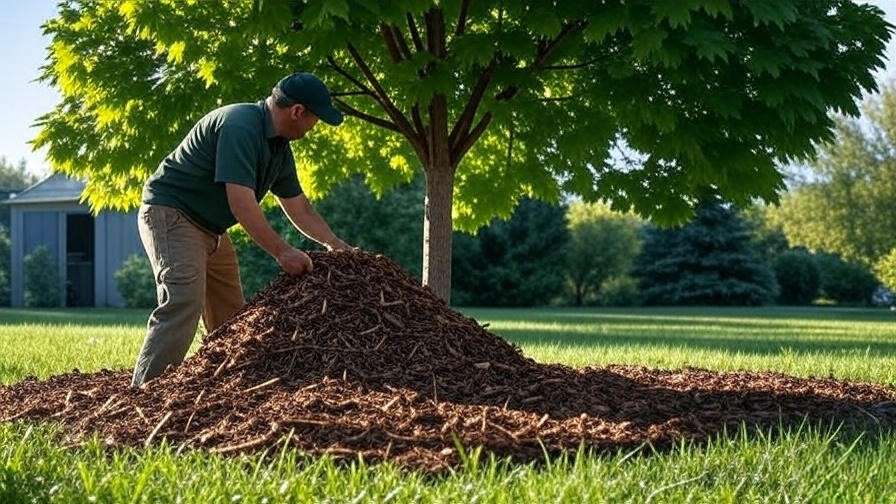
Watering and Mulching
Water deeply after fertilizing to activate nutrients, aiming for 1–2 inches weekly during dry spells. Apply a 2–3-inch layer of organic mulch (e.g., wood chips or bark) around the base, keeping it 6 inches from the trunk to prevent rot. Mulch retains moisture, regulates soil temperature, and adds organic matter. 🪵
Pruning and Pest Management
Prune dead or crossing branches in late winter to improve nutrient distribution and air circulation. Monitor for pests like aphids or scale, which thrive on nutrient-stressed trees. Regular fertilization strengthens maples against these threats, but inspect monthly for early signs.
Seasonal Maintenance Checklist
- Spring: Fertilize, prune, and check for pests.
- Summer: Water deeply during heatwaves and monitor for nutrient deficiencies.
- Fall: Apply slow-release fertilizer and mulch for winter protection.
- Winter: Inspect for storm damage and plan next season’s fertilization.
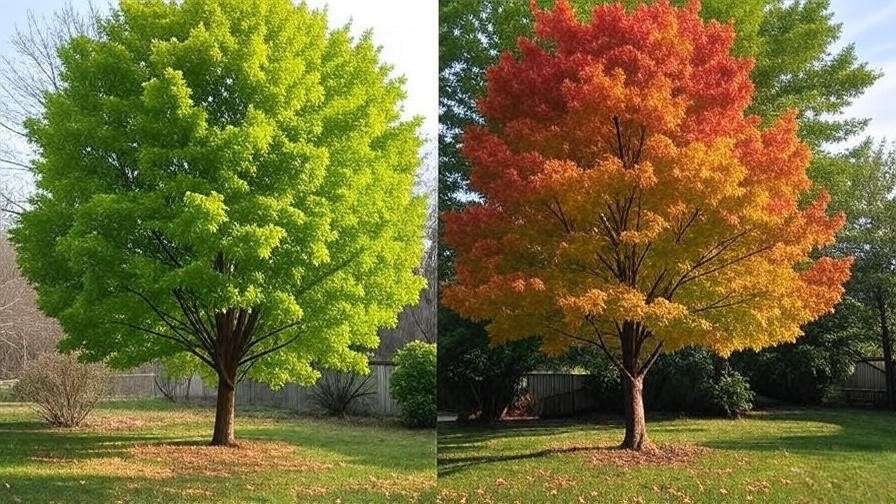
Conclusion 🌟
Fertilizing a maple tree is the secret to unlocking its full potential—vibrant foliage, robust growth, and stunning fall displays. By conducting a soil test, choosing the right fertilizer, and applying it at the optimal time, you can transform your maple into a landscape masterpiece. Avoid common mistakes like over-fertilization, and complement your efforts with proper watering, mulching, and pruning. With this guide, backed by expert insights and university research, you’re equipped to nurture a thriving maple for years to come. 🌳
Have a question or a maple success story? Share it in the comments below, or consult a local arborist for personalized advice. Ready to give your maple the care it deserves? Grab a soil test kit and start today! 🌿

